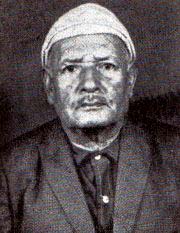
CRICKET REMEMBERS
Ashi Lepcha
|
|
|
 |
CRICKET REMEMBERS
Ashi Lepcha |
You call me Cricket; yes, Cricket is my name. I joined sometime in the 1920's as a casual worker when Mr. O'Riordan was the Headmaster & Mr. Berry was the Teacher in charge of games. I was paid a paltry sum of sum Rs 12/- only per month from the Games fund. I had to help out at games, mainly for Cricket which was then the most popular game. Since I was very young, the teachers as well as the boys called me Cricket chokra! Slowly as I grew up into a man the word 'Chokra' was dropped, and Ashi Lepcha who is the real me, was reborn as 'Cricket'; I say 'reborn' because my real identity is only a memory. Time rolled on, and I was finally absorbed in Government Service in 1950. I used to stay in the present Lines, the condition of which in my opinion was then no better than what it is at present. Before I joined, the Annual Sports used to be held on the upper flats It was later shifted to the Lower flat. Even in those days, the Annual Sports was quite a colourful feature. The lower flat looked entirely different in those days. The beautiful chinar tree which you all call your school Calendar tree, near the Games Pavilion, and the Dhupis around the fencing were then quite young and hardly 10 to 12 ft. tall. The Chinar tree was then enclosed by barbed wire fencing. To the best of my knowledge it had been planted by Mr. Barnes. The wooden railing was made of very good quality timber and was beautifully maintained. There was absolutely no pilferage. In the 1920's the boys used to play tennis on the small court above the Gymnasium. Previously the same place accommodated the service latrines for the boys and the sweepers used to remove the night soil everyday only to dump them in a deep pit to the south of the Dhobi Jhora-beyond the school campus. During the time of Mr. Staynor the Boy's tennis court was made ready on the Northern side of the grass pitch it was later shifted to in front of the main pavilion, where net practice is done at present. The culvert over the ditch to the South of the games Pavilion was built sometime in the 1930's and I quite well remember Mr. Hill, Games Master, who was also an ex-student driving his motor bike from the games flat, over the culvert and down the road. For Cricket, Football & Hockey matches with schools in Darjeeling the boys used to travel by train. They had to spend the night at Darjeeling and return the next day. Rugby was also quite a popular game in our school in the 1930's. It was played on the lush green pitch which occupied what is now called the Junior Games flat. This game was discontinued after Mr. V. C. Prins left the school in 1946. Till 1957 the part occupied by the Multipurpose Building & the portion of the flat in front was known as the Junior flat it was separated from the rest of the upper flat by a barbed wire fencing. The Dhupi tree to the immediate South West of the Multipurpose Building still bears the mark of the wire fencing. Even then as now, the ‘chor batos' or short cuts, down the ‘khud' side in front of the Multipurpose Building were frequented by the boys. During the time of Mr. Nugent, these short cuts were fenced off, but traces of these fences no longer remain to day. These are but some of the many changes I have witnessed over these years. The time has come for me to retire-and I am glad that I shall retire with many happy memories of this school, of the boys, of the staff and of my fellow workers.
As narrated to Mr. A. Banerjee.
Note: When my wife and I returned to VS in 2001, I was told the following story. We were on the top flat and the teacher with me asked if I recognised the man leaning over the wall, looking down on the bottom flat. I didn't recognise him. I was told that he was "Cricket's son". The he asked me what Crickets son was called. I didn't know that either. "Little Cricket" was the response! I was then told about what Cricket did in his job. How, at the beginning of every year, and at the end of the cricket season, he would scrape and apply linseed oil to all the "Gunn and Moore" cricket bats. All the bats that could be repaired, were repaired. (Gunn and Moore bats were the "bees knees" in those days). Eventually, Cricket died. A search was made of his little kingdom - the cricket pavilion. In there were found a whole pile of bats which had passed the limits of repair. He had never had the heart to throw them out. They took those broken bats and they were placed on Cricket's funeral byre.
John Feltham.
|
|---|